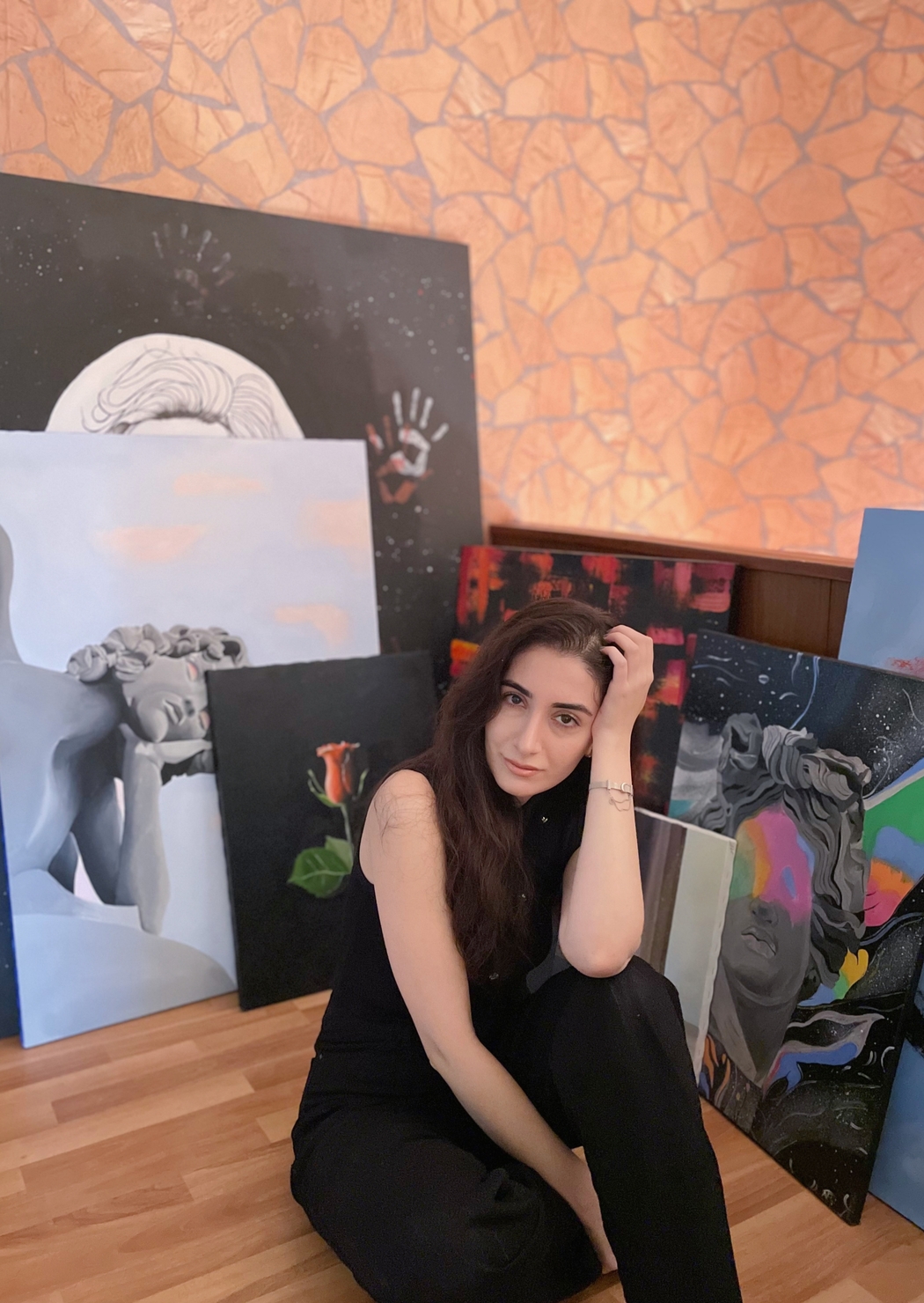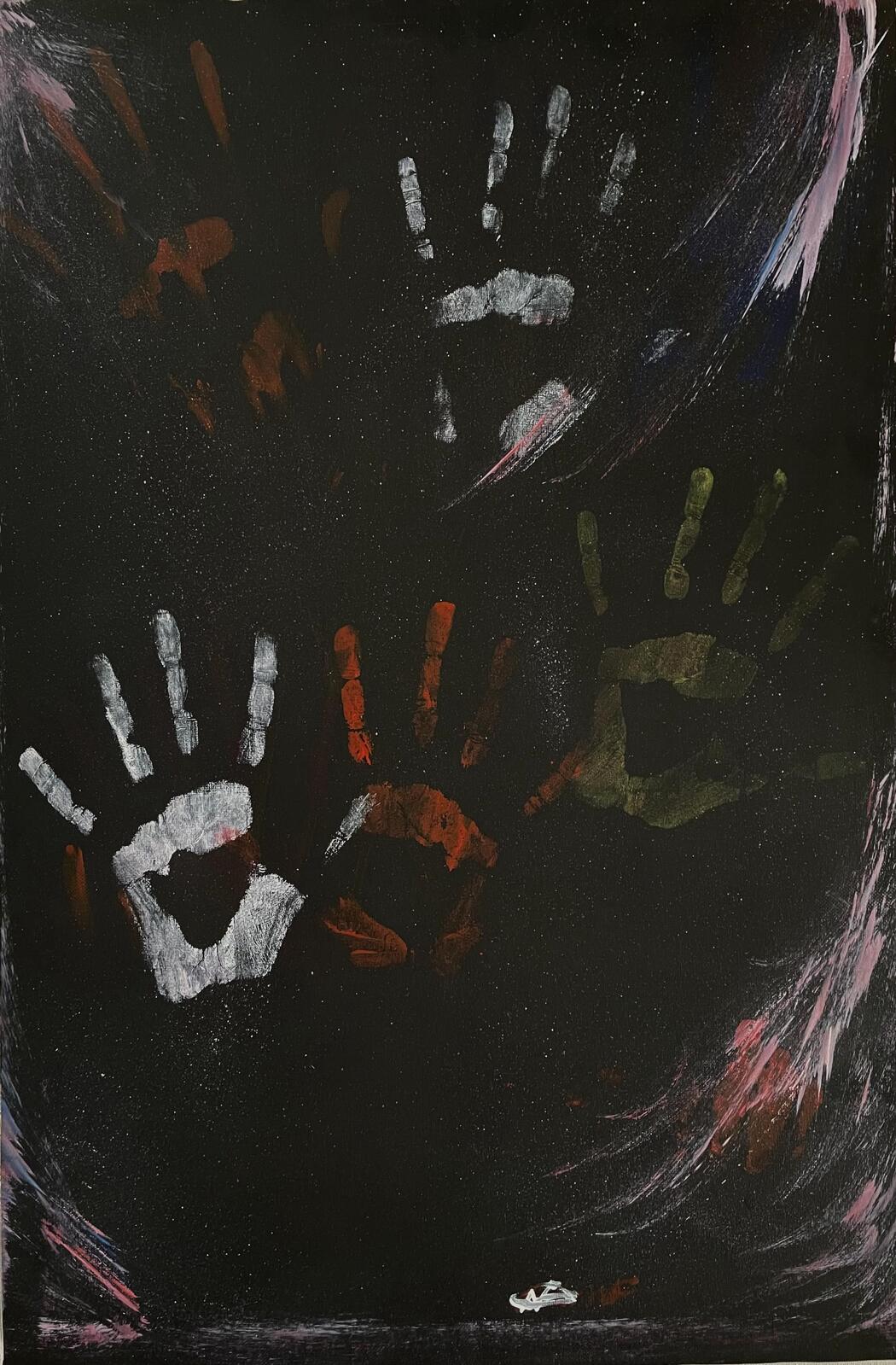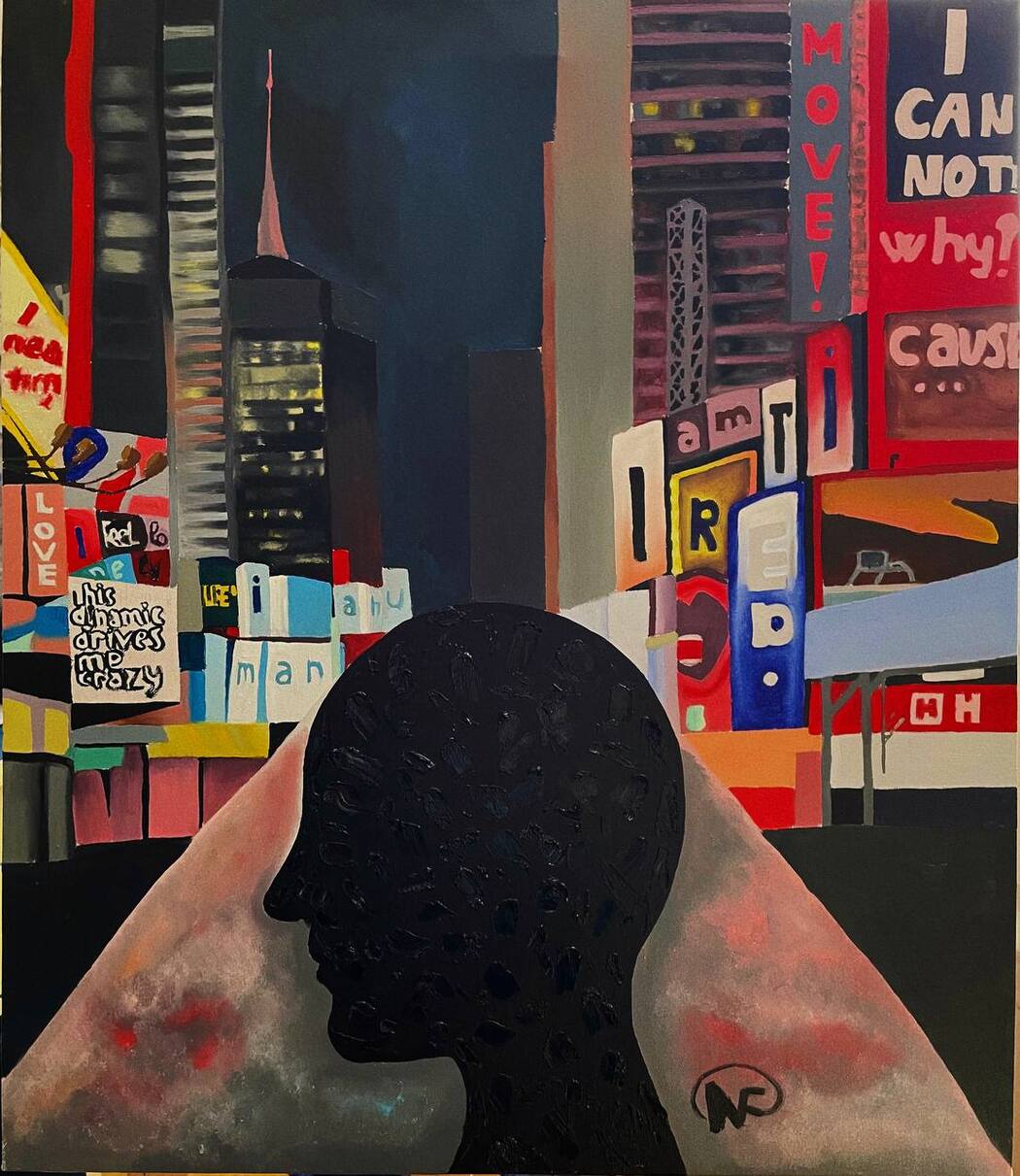Fidan Fakhraddin
Year of birth: 1998
Where do you live: Azerbaijan
Your education: Higher (Master’s degree)
Website | Instagram

Can you tell us about your journey as an artist?
I became fascinated with drawing when I was six years old. I remember my very first drawing was inspired by a book called *Golden Tales*, specifically the story about the adventures of a hobbit, my favorite tale.
My first solo exhibition happened thanks to a kind woman. If it weren’t for her persistence, a new path into the world of art might never have opened up for me. After that, I began participating in various competitions and exhibitions, and not much has changed since then.
No matter what happens in my life, one thing I know for sure: I have always returned to art, and I always will.
Your work often reflects societal issues and internal conflicts. How do you choose the themes you explore, and what inspires you to address these particular issues?
Everything starts with the individual. First and foremost, I rely on my own feelings and emotions—how I react to situations. Once I’ve come to understand and accept them, I begin to capture them on canvas. The same process happens with others. I listen and try to understand. Sometimes, people hold so much inside themselves—whether it’s anger or joy—it all accumulates and leads to a point where they simply can’t bear it anymore. Imagine a balloon. You keep inflating it more and more, unsure of how long it can hold, but you don’t stop. Eventually, the balloon inflates so much that it bursts—loudly and unpleasantly. The same thing happens to a person. We can’t handle everything indefinitely. We must find a way out of situations before we’re left in pieces, like a popped balloon. This is what inspires and drives me to reflect these experiences in my paintings. I aim to convey the message that people should listen to one another and take the right steps to prevent such moments.
 Fidan Fakhraddin, The world through one’s own eyes
Fidan Fakhraddin, The world through one’s own eyesYou mentioned that art is not just entertainment for you but a part of life. How has art influenced or changed your perspective on life and society?
Most likely, society has had a significant influence on my worldview and attitude towards it. If I compare my 18-year-old self to who I am now at 26, the difference is immense. At 18, I began studying sociology, and gradually, I started uncovering different facets of society and people. With each new discovery, my understanding of the world around me became clearer and sharper. Thanks to this journey, my thoughts and perspectives have become more defined and precise, and my positions—stronger. At the same time, I understand that the world changes, and so do I. This constant evolution inevitably finds its way into my art. For me as a child, art was just a form of entertainment. But now, it has become a tool to help me express and explain my positions.
In your artist statement, you talk about the influence of societal stereotypes on our personal goals and happiness. Could you expand on how this theme appears in your artwork?
Yes, I believe stereotypes are a major obstacle in people’s lives. As I always say, stereotypes are fairy tales for adults. They control our thoughts, perspectives, and even emotions, all on a subconscious level because they are instilled in us from childhood. However, it’s important to note that there are those who boldly ignore stereotypes and live according to their own rules (within reasonable boundaries, of course).
I’ll use my painting *Big City* as an example. This piece reflects the loneliness that is often more prevalent in large urban areas compared to smaller towns or villages. Sometimes, people become so focused on acquiring material possessions or seeking the approval of others that they forget what it truly means to be happy and to enjoy life. At some point, when we look back, we realize that this wasn’t what we wanted or longed for at all. The approval we worked so hard to gain turns out to be meaningless. A person, first and foremost, needs to gain self-approval. They need to understand that their efforts should be for themselves, not for others. Only with this realization can true harmony be achieved.
How do you balance between expressing personal struggles and societal issues in your paintings? Are there any specific techniques you use to capture this duality?
Each of us faces various challenges, such as misunderstandings or the hesitation to voice our opinions. In drawing, I found a way to communicate. It not only helps me develop my artistic skills but also allows me to find a compromise with the world and with myself. The balance lies in the fact that it’s not always necessary to speak to express thoughts—you can convey them through paintings. After all, paintings have their own way of communicating too.
 Fidan Fakhraddin, Imprints
Fidan Fakhraddin, ImprintsDo you think art has the power to create change in society? If so, how do you hope your artwork will impact viewers?
Of course, I believe that art has the power to change the world. And I am confident that my paintings will find their way into people’s hearts. They not only reflect problems and emotions but also offer hope for understanding and acceptance.
Are there any artists, philosophers, or sociologists who have influenced your views on society and your approach to art?
There definitely are influences, but I wouldn’t say I have favorite artists, sociologists, or philosophers. When studying theories by thinkers like Marx, Weber, Berne, or Freud, I draw my own conclusions. And you know what’s most interesting? I can apply those conclusions in practice. Naturally, this helps both in making life decisions and in creating my paintings. The key is finding that delicate balance between them.
 Fidan Fakhraddin, Big city
Fidan Fakhraddin, Big city
Leave a Reply